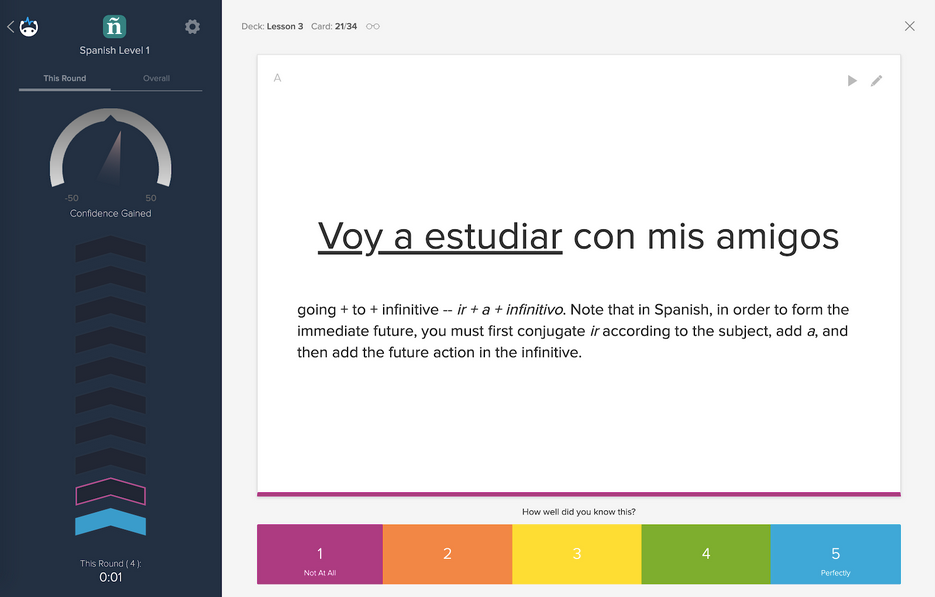It may not be obvious to all Spanish learners but, similar to the English language, there are actually many different Spanish accents. Mexico alone has 10 distinguishable varieties of the Spanish language! And that's not even mentioning the Castilian accent, Caribbean accents, or any of the many Spanish accents from the countries in South America.
You might wonder: Are these differences important? Should you learn a specific type of Spanish? Learning a language is overwhelming enough. And now you need to choose a form and accent?
There isn't really any “best” form of Spanish to learn. Nevertheless, it's useful to know the important differences between the various forms of this widely spoken language.
[See also: Our complete guide on how to learn Spanish more efficiently. Or just check out our online & mobile Spanish flashcards curriculum!]
Many Spanish learners may become frustrated when testing their recently acquired Spanish skills because native speakers from other countries speak very differently from what we are used to hearing in our Spanish lessons—and sometimes they even use different words.

If this sounds familiar to you, rest assured that this is normal. Even fluent Spanish speakers who learned the language from one country may find it extremely difficult to understand native speakers from other countries. You have not been wasting your time or money by learning Spanish. Just like English, Spanish has several variations in accents, pronunciations, and commonly used words that can make the same language sound very different.
Rather than see it as frustrating, embrace it, and learn some of the diversity of the way that Spanish is spoken. It's good to be familiar with different Spanish accents; that way, you won't be thrown off when you hear Spanish pronounced in a way you're not used to.
Brainscape can help. Dive into this guide to get acquainted with different Spanish accents, including the Mexican accent, Caribbean accent, and Castilian accent.
¡Vamos!
Learn the many different Spanish accents
You're probably familiar with how multi-faceted English is: it takes on many different accents when spoken by Americans, Australians, the British and the Irish —just to name a few.
Although the pronunciation varies, the meaning and the intention of what is spoken is the same. The trick here is to have an idea of how each of these cultures tends to pronounce and articulate certain words.
For instance, if you have heard a British accent before with enough frequency, odds are you will be able to understand one simply by knowing that the speaker is British. A similar scenario exists in the Spanish language where there are also many ways to pronounce and articulate words.
Below we'll briefly explain some of these accents. Click the links to hear each accent for yourself!
Castilian accent
As Infoplease explains: The Spanish of Madrid and of northern Spain, called Castilian, developed characteristics that never reached the New World. These include the pronunciation of "ci" and "ce" as "th". In Madrid, gracias ("thank you") becomes "gratheas" (as opposed to "gras-see-as" in Latin America).
Another difference is the use of the word vosotros (you all, or you guys) as the informal form of ustedes in Spain. Castilian sounds to Latin Americans much like British English sounds to U.S. residents.
Listen to the Castilian accent.
Colombian accent
This is a very diverse country with many different accents, but in general, and especially in the Colombian highlands in cities such as Bogotá, their accent is relatively neutral and clear, although there is a slightly marked “s” that sounds like “shh”. This is very different from the “s” pronunciation in Spain or Argentina, where it has a much softer, almost imperceptible sound.
Also, letters like “b,” “d,” and “g” are occlusive in Colombia, meaning that their sounds are approximated to similar letters, because their sound is pronounced more softly.
Read more about the Colombian accent and listen to it as well.
Peruvian accent
The Peruvian accent doesn’t have a strong intonation, but its tone does exhibit an influence from indigenous languages like Quechua and Aymara.
Listen to the Peruvian accent.
Mexican accent
Think Speedy Gonzalez, but not as exaggerated. There is marked tone in the last word of every phrase, and they also reduce the accentuation of some vowels. For example, a phrase like Que te pasa sounds more like “Que t pasaaaaa”. Mexican Spanish is pretty understandable and clear, and probably the easiest regional variety to identify.
Listen to the Mexican accent.
Chilean accent
In my opinion, Chileans speak quickly, mumble, and chew the last syllables of certain words. There is a certain similarity with the Peruvian accent, though the latter is much slower and clearer.
Listen to the Chilean accent.
Argentinian accent
According to Infoplease, Generally in the Spanish word "tú" is the singular way of saying "you". In Buenos Aires, however, "vos" is used instead. It is accompanied by a modified old Spanish verb form. It is as if part of the English-speaking world still used "thee" and "thou" in everyday speech.
Argentines also pronounce the "ll" as an English "zh", while most other Spanish speakers pronounce "ll" as an English "y".
Listen to the Argentinian accent.
Caribbean accent
Infoplease also has a great description of the Caribbean accent. Spanish is spoken in the Caribbean, coastal areas of Latin America, and in some cases in southern Spain.
In the seventeenth and eighteenth centuries, the accent in Seville, Cádiz, and other cities in Andalusia, in Southern Spain, began to change. Speakers began to drop the final "s" on words. The settlers and traders of southern Spain took this dialect with them to the Caribbean and other coastal areas.
Today Caribbean or "Lowland" Spanish is characterized by its relative informality, its rapid pace, and the dropping of "s" sounds, allowing people to talk more quickly.
Listen to the Caribbean accent.
Pronunciation is key—in any language
Of course, this list is somewhat of an oversimplification and it certainly does not cover the entire Spanish-speaking world. It is only meant to act as a helpful guide for those of you trying to distinguish between some of the more distinctive accents.
A person's accents is an important part of their identity and culture. The different accents in Spanish shows just how rich this language is. So, how important is it for you to learn a specific Spanish accent? Actually, not at all. The important part is making sure that you can speak clearly and understandably.
If you practice your pronunciation, the way in which a word is spoken, you will not only learn a language but also speak it clearly. Brainscape's adaptive Spanish flashcards are by far the most effective way for you to learn Spanish AND practice pronunciation.

Our flashcards use spaced repetition to learn Spanish vocab and grammar, which is when you're forced to think of the answer from scratch rather than choosing it. It's best when you speak the answer out loud, almost as if you're speaking with someone in Spanish on the streets. This means you're producing the language all throughout your learning process.
When the flashcard is flipped to reveal the answer, there's an audio recording by a native speaker that reads out loud the word. You can listen to the right pronunciation and match the native accent straight away! Maybe you'll even manage to avoid embarrassing yourself with real humans.

Are you ready to learn Spanish? Remember to check out Brainscape's complete guide to learning Spanish more efficiently. And start today!
